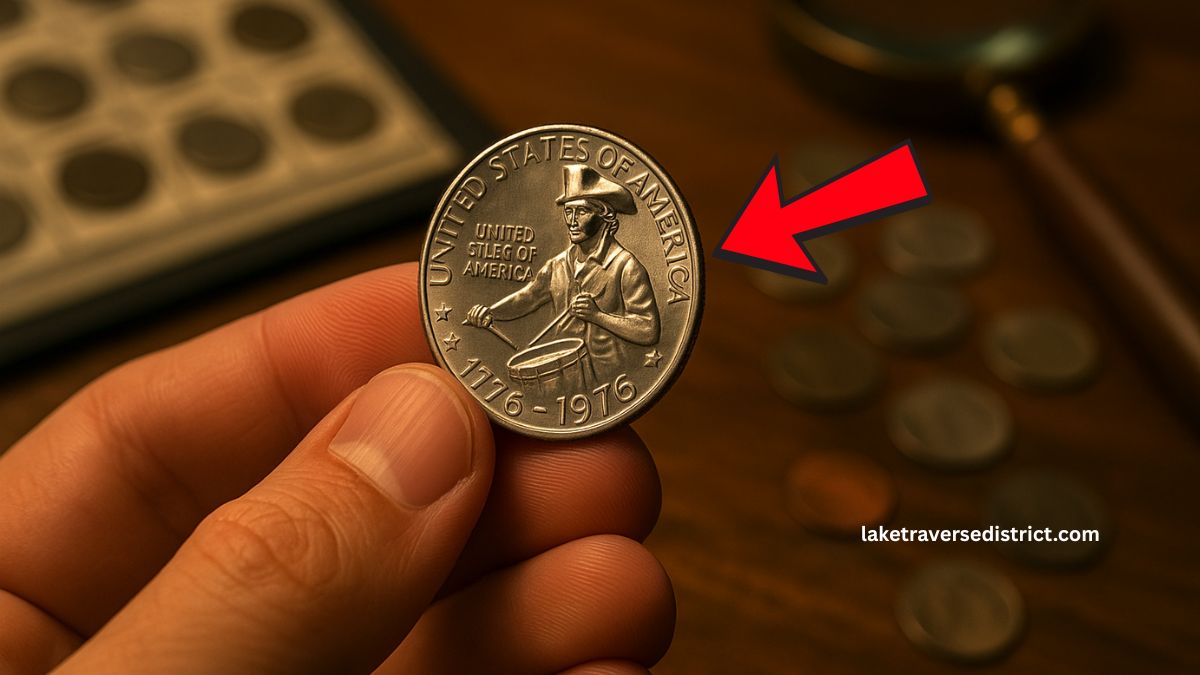Many Americans still carry or store the iconic 1976 Bicentennial Quarter without realizing its potential value. While most are only worth 25 cents, a select few rare variants are now fetching prices as high as $1 million due to minting errors, metal composition, and exceptional condition. Could your spare change be a hidden treasure?
What Is the Bicentennial Quarter?
Issued in 1976 to commemorate 200 years of American independence, the Bicentennial Quarter features a unique reverse design: a Colonial drummer boy, thirteen stars, and a victory torch.
The obverse still displays George Washington, but the coin bears the dual date 1776–1976, setting it apart from regular quarters.
What Makes One Worth $1 Million?
Not all Bicentennial Quarters are valuable. However, specific rare types and error coins have commanded staggering prices from collectors. Here’s what makes a Bicentennial Quarter extraordinarily valuable:
Minting Errors
Some of the most valuable coins were struck with unusual errors during production:
- Double Die Obverse (DDO): Doubling of letters or numbers.
- Off-Center Strikes: Misalignment in the coin’s design.
- Wrong Planchet Errors: Coin struck on metal meant for another denomination.
Composition
Most Bicentennial Quarters were minted in copper-nickel clad, but a small number were produced in 40% silver, typically as part of special mint sets. These silver quarters are significantly more valuable, especially in pristine condition.
High Grade and Proof Coins
Collectors pay premium prices for coins in MS67 or higher (Mint State), and proof coins that feature deep mirror finishes. These coins are often stored properly and show no signs of wear.
Estimated Values of Rare Bicentennial Quarters
| Type of Coin | Unique Feature | Estimated Value |
|---|---|---|
| Regular Circulation Bicentennial Quarter | Copper-nickel clad | $0.25 |
| 40% Silver Bicentennial Quarter (Uncirculated) | Minted in silver, pristine condition | $300 – $3,000 |
| Double Die Obverse Error | Doubling visible on design | $1,000 – $5,000 |
| Off-Center Strike | Misaligned strike | $2,500 – $6,000 |
| Wrong Planchet Strike | Incorrect metal or weight | Up to $10,000 |
| High-Grade MS67+ or Proof Coin | Near-perfect condition | $5,000 – $15,000+ |
| Ultra-Rare Error + Silver Combo | Error coin on silver planchet in MS67+ | Up to $1 million |
How to Know If You Have One
Before you rush to the coin shop, check the following:
- Mint Mark: Look for an “S” mint mark for silver versions (San Francisco Mint).
- Weight Check: Silver coins are heavier (5.75g vs. 5.67g for clad).
- Error Inspection: Use a magnifying glass to identify any doubling or misalignment.
- Grading: If your coin looks flawless, consider sending it to a professional coin grading service.
Tips for Selling Valuable Coins
If your Bicentennial Quarter seems rare:
- Get it authenticated by a professional grader.
- Consider auctioning through a reputable coin auction house.
- Avoid selling without a proper evaluation – undervaluing a rare coin could cost you thousands.
The 1976 Bicentennial Quarter is more than just a piece of change—it could be a million-dollar treasure. While most are common, specific error coins, silver variants, or high-grade examples can make you rich overnight.
Check your wallets, coin jars, and collections—you might just be holding history and a small fortune in your hand.
FAQs
Are all 1976 Bicentennial Quarters valuable?
No. Only certain rare variants like error coins, silver coins, or high-grade versions hold significant value.
How do I tell if my Bicentennial Quarter is silver?
Silver quarters typically have an “S” mint mark and were part of special uncirculated sets. They are also heavier and shinier.
Can I find one of these rare coins in circulation?
It’s rare but possible. Some collectors have reported finding valuable variants in pocket change, coin jars, or old collections.

